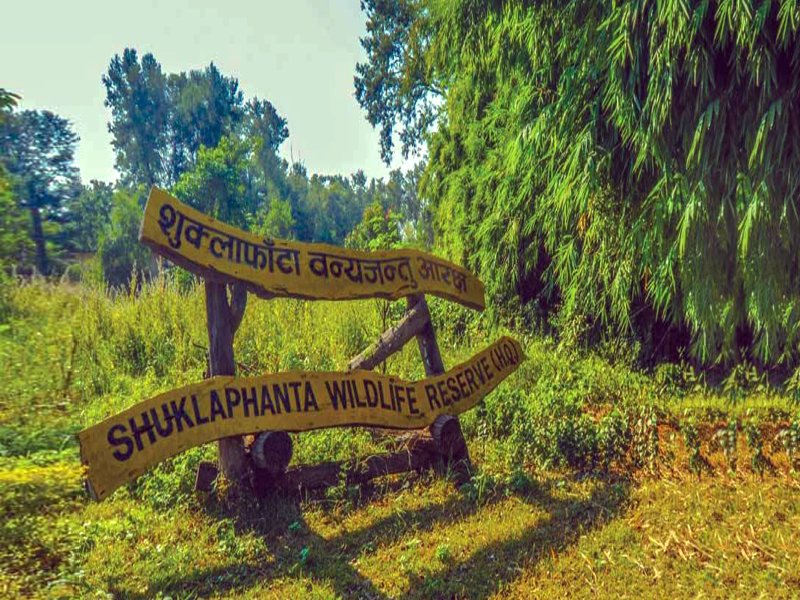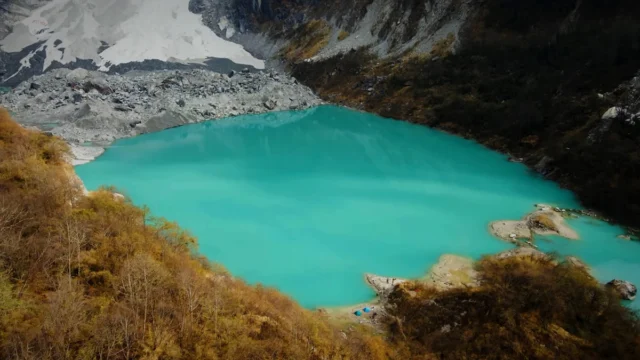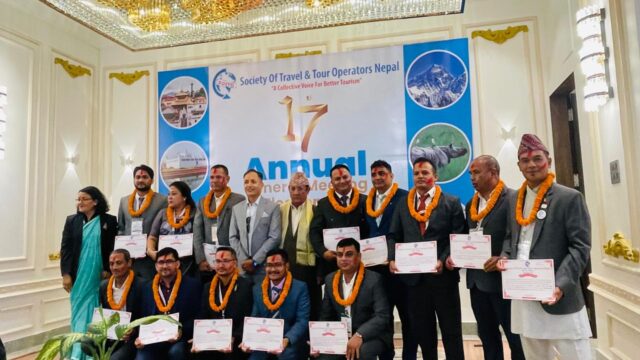In a significant development, the critically endangered white-rumped vultures (Gyps bengalensis), known as Dangar in Nepali, have started nesting in and around the Shuklaphanta National Park, bringing a wave of excitement among conservationists. The Nepal Bird Conservation Association (BCN) reports that there are currently 114 nests of the white-rumped vultures in the area.
According to ornithologist Hirulal Dagaura from BCN, the breakdown of these nests is as follows: 82 in Bhatpurifant, 17 in Tarapur, six in Bansaha, eight in Parsiya, and one in Kanji outside the park. He notes that this marks an increase in the number of nests compared to previous years, attributing this positive change to long-term conservation efforts.
Alongside the white-rumped vultures, the endangered slender-billed vultures (Gyps tenuirostris) have also started nesting and raising chicks. Three nests of the slender-billed vultures have been found—two in Bhatpurifant and one in Hirapurfant.
The survey extended to nearby regions, where two white-rumped vulture nests were found in Dadeldhura and 12 in Kailali. Additionally, nine nests of Himalayan vultures were discovered in Khodpe, Baitadi.
Regular monitoring is being conducted in areas with nests of the critically endangered white-rumped, slender-billed, and Himalayan vultures. Dagaura highlights that several vulture species in Nepal, including the long-billed, red-headed, and white-backed vultures, remain critically endangered, while the Egyptian vulture is listed as endangered.
Nepal is home to nine vulture species. The decline in vulture populations has been largely attributed to the use of veterinary drugs like Diclofenac, which is toxic to these birds. Conservation efforts such as banning Diclofenac, improving habitats, and establishing safe feeding centers have contributed to the gradual recovery of vulture populations. Dagaura also mentions that community-level awareness campaigns have played a crucial role in vulture conservation.
The decline of vultures began in the 1990s, with a dramatic 99% reduction in their population. Surveys conducted by the Nepal Bird Conservation Association from 2002 to 2010 revealed a 91% decrease in white-rumped vultures and a 96% decrease in slender-billed vultures.
Recent studies have identified other veterinary drugs, such as Ketoprofen, Nimesulide, Flunixin, Carprofen, and Aceclofenac, as toxic to vultures. Despite the ban on Diclofenac, these drugs are still in use, posing a continued threat to vulture populations. Other factors contributing to vulture mortality include illegal pesticide use, electrocution from unorganized power lines, and cross-border legal challenges that hinder timely rescue efforts for injured vultures.
Habitat destruction, the modernization of agricultural practices, and the practice of burying dead livestock have also led to a shortage of food, further endangering vultures. Conservation efforts, however, have shown promising results, with vulture populations gradually increasing.
“Although vultures are carnivorous birds, they do not hunt for food. Instead, they play a crucial role in maintaining environmental balance by scavenging on carcasses,” says Suwan Chaudhary, an active participant in vulture conservation. “Their consumption of carrion helps reduce the spread of diseases like cholera, typhoid, and dysentery.”
Culturally, vultures hold religious significance in Hinduism, where they are regarded as the vehicle of Shani Dev. Chaudhary emphasizes that conserving these birds requires collaboration from all sectors. The Government of Nepal has implemented a five-year vulture conservation plan from 2023 to 2027 to protect these essential scavengers and their habitats.






